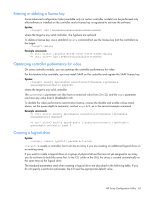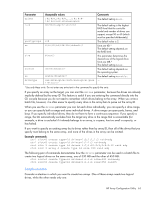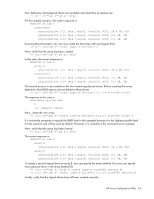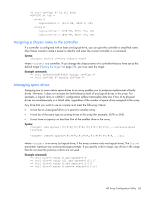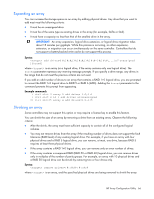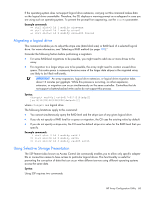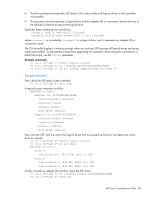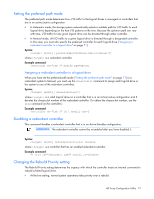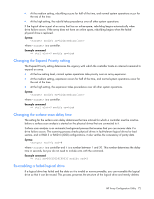HP ProLiant BL660c Configuring Arrays on HP Smart Array Controllers Reference - Page 67
Moving an array, Extending a logical drive, Example commands, Syntax
 |
View all HP ProLiant BL660c manuals
Add to My Manuals
Save this manual to your list of manuals |
Page 67 highlights
For example, in an existing array (array a), six drives (1e:1:4-1e:1:9) are in use. With all criteria met, you can shrink the array to four drives by removing the last two drives with the command: remove drives=1e:1:8-1e:1:9 Example commands: => array a remove drives=1e:1:12-1e:1:14 => array b remove drives=1c:1:6-1c:1:7 Moving an array Some controllers may not support this option or may require a license key to enable this feature. You can move an array by designating different physical drives for the array. To move the array, each of the physical drives where the array will reside must meet the following criteria: • It must be an unassigned drive. • It must be of the same type as the physical drives currently in the source array (for example, SATA or SAS). • The destination drives must have sufficient capacity to hold all the logical drives present in the source array. Like array creation and expansion, the useable space in all drives is reduced to the size of the smallest physical drive in the destination disk set. Moving an array automatically removes any previously assigned spare drives. If spares are assigned to the existing array, they must be designated for the array when it is moved. Syntax: modify drives spares where is an array, and the specified physical drives are the new destination for the array. For example, in an existing array, three 72-GB SAS drives (1e:1:4-1e:1:6) are the source. Another drive of the same size is the spare (1e:1:9). With all criteria met, you can move the array to three different 72GB SAS drives by specifying the new destination drives in the command (1e:1:12-1e:1:14). To maintain the same spare drive, be sure to designate the spare drive for the moved array. Example commands: => array a modify drives=1e:1:12-1e:1:14 spares=1e:1:9 => array b modify drives=1c:1:6-1c:1:7 Extending a logical drive If the operating system supports logical drive extension, you can use any unassigned capacity on an array to enlarge one or more of the logical drives on the array. IMPORTANT: An array expansion, logical drive extension, or logical drive migration takes about 15 minutes per gigabyte. While this process is occurring, no other expansion, extension, or migration can occur simultaneously on the same controller. Controllers that do not support a battery-backed write cache do not support this process. Syntax: modify size=#|max|? [forced] where is a logical drive. HP Array Configuration Utility 67



